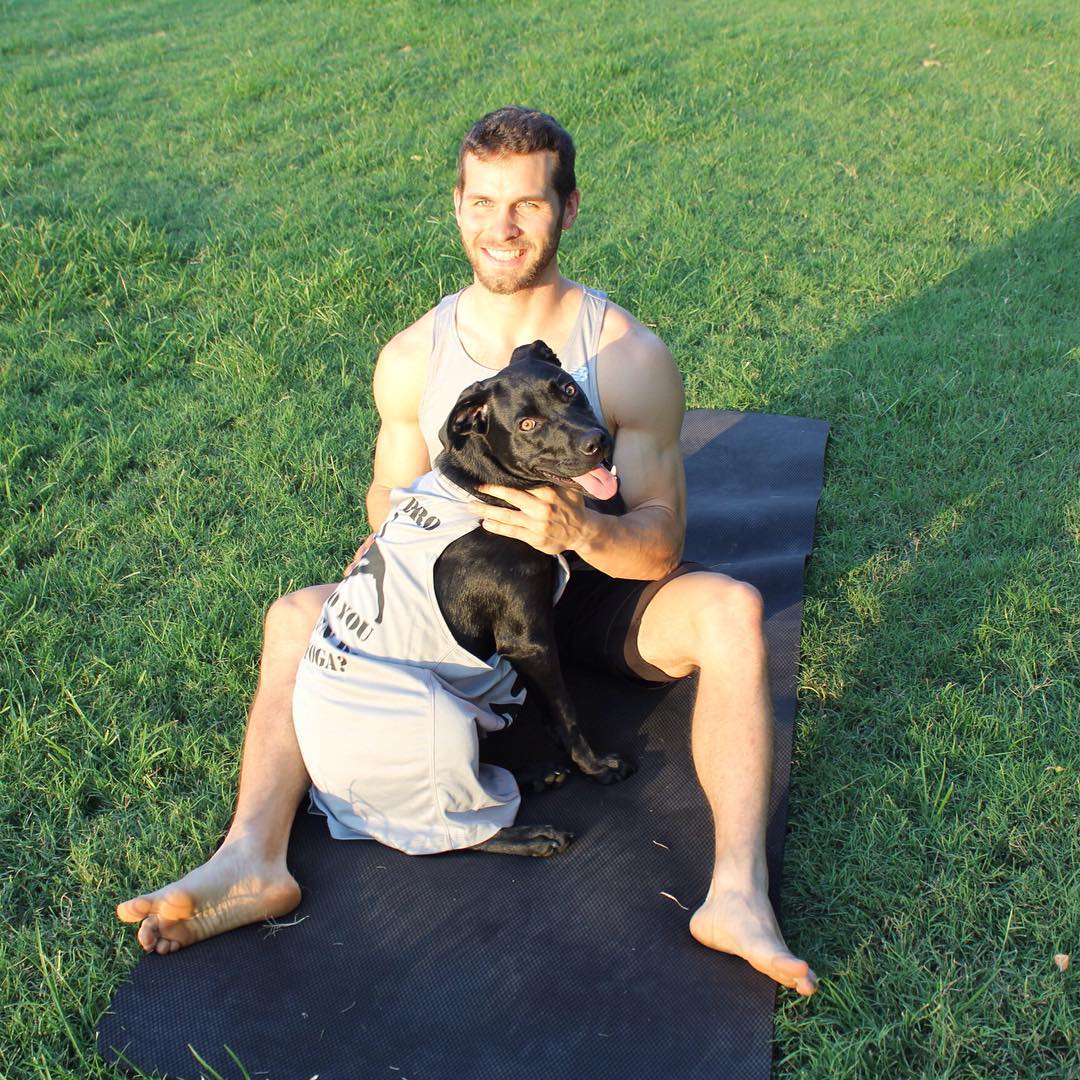If you completed Week 2‘s assignment, you spent a lot of time developing and making your goal specific. This week builds off of that lesson by teaching you how to create an effective workout plan to succeed that goal, focusing on the specifics of what to include in your plan, setting standards for yourself, and assignment to pull it all together.
Just like goals, not all plans are made equally. Remember the difference between a vague, non-specific goal and a powerful goal that is (1) intrinsic, (2) related to your why, and (3) a SMART goal? Plans are the same. In order to make your plan save you time, energy, and help you accomplish your fitness goals, it should have certain components.
Here’s what an effective workout plan should do for you:
- Reserves your energy and willpower for your workouts and healthy practices, rather than wasting energy on the planning process
- Creates unconscious healthy habits, so you won’t even have to think about whether or not work out, eat healthy, or sleep well – you’ll just do it!
- Establishes standards for yourself, as well as corresponding consequences – both good and bad.
We’ll start with the first part.
How can you create a plan that saves time and energy?
Let me ask you a question: Have you ever gotten to the gym and spent 15 minutes walking around trying to figure out what to do? I know I have. This is what happens when we don’t have a plan in place. We waste time. We expend energy thinking about what we’re going to do, rather than using that effort on the exercises themselves.
Believe it or not, having lots of choices can be really bad for us; responsible for much more than just wasted time. Just think about all of the different options you have in activities which we now take for granted – the music you want to listen to, the show you want to watch on Netflix, what you want to eat for dinner, where you should go for lunch, and so on. The seemingly infinite amount of decisions available to us every day result in stress, higher levels of depression, and an inability to move forward.
Making a plan for yourself is an easy way to combat this. Instead of arriving to the gym or getting to your yoga mat and wasting time considering what exercises or what workout you’re going to do, you don’t think about – you just start. There’s no time wasted figuring out which workout or which exercises to do. You already know EXACTLY what you’re doing because you’ve written a plan, and you’re busy DOING it.
How can your plan help you develop discipline?
Be honest: Have you ever said to yourself, “I wish I had more discipline” or “If I had more discipline, I would…” There’s a misconception that discipline means having more willpower, but that’s only part of it.
Here’s the truth: Discipline is what happens when the plans you create for yourself become second-nature. It’s what happens when you’ve repeated the plans you create for yourself so many times that they become daily habits. This includes activities like making yourself a green smoothie in the morning, waking up with enough time to spend 20 minutes doing yoga, or take 10 minutes before bed to meditate. These are all extremely beneficial activities; each of them turned into habits through repeated adherence to a plan.
So when you say, “I wish I had more discipline”, what you should be saying is, “I need to make a plan to create better habits.” But sticking to your plans can get difficult. Understandably, life gets in the way. This doesn’t mean that you give up on your fitness when something comes up; instead, you give fitness a higher priority; specifically, you make fitness a non-negotiable priority. Do this, and I promise you that eventually your body and your mind will come to crave the healthy activities that come from a lifestyle in which fitness is a non-negotiable priority. Eating well, exercising regularly, and taking care of yourself become habits; automatic actions that requires zero effort and zero thought, and from there you can move on to creating more plans, to lead to more habits, and so on, and so on…
Creating standards so you can get BETTER.
The third part of creating effective plans (that we’ll discuss here, at least) involves establishing standards, consequences, and rewards for yourself. We touched on this last week when we covered SMART goals, referring to “M for Measurable”, but this goes beyond that to say, “If I accomplish A, then I reward myself with X” and “If I do not accomplish A, then the consequence is Z.” Before you process that last example, the point of this isn’t to punish or get down on yourself if you don’t reach your goals; it’s because holding yourself to a standard is the only way to get better. And since you’re the one saying what the standards are, there’s no reason for you not to be able to achieve them.
If you have low levels of fitness, you have low standards of fitness. That’s fine, and that’s where you’ll start. Set a low standard for yourself, achieve it, and recognize that you DO have the ability to meet your goals. From there, you can continually raise the bar for yourself. As I said last week, it’s more important that you set a modest goal for yourself at first, and then slowly increase the ambitiousness of your goals as time goes on; rather than setting an ambitious goal to start and fail, which reinforces the subconscious belief that you are unable to fulfill your goals.
Your consequences shouldn’t be too draconian. You don’t need to beat yourself or starve for a day. Just deprive yourself temporarily of a luxury you could do without. Your rewards should reinforce your healthy habits, but also be a form of celebration. Maybe you buy yourself some new workout apparel, a workout toy, or a yoga mat. But don’t celebrate 10 pounds lost by eating an entire birthday cake.
Looking For A Program?
If you’re interested in starting a yoga program with Man Flow Yoga to gain strength, flexibility, and mobility, BUT don’t know where to start, we got you covered. Give our FREE 7-Day Challenge a try. Sign-up below! Signup for the FREE 7-Day Challenge
A final note on standards as they apply to fitness:
If you’re new to fitness, and don’t already have practice a healthy lifestyle, your standards should be based upon the actions you take to reach your goals; rather than specific outcomes. The reason for this is because you can’t control the outcome; only the actions you make to reach the outcome. For example, you can’t control whether or not your body builds a specific amount of muscle or burns a certain amount of fat; you can only follow a plan that should get you there.
Your standards, then, should be based on the amount of healthy actions or healthy decisions you made. Examples of this include:
- Completing a certain percentage of your workouts
- Grading yourself on your adherence to a healthy diet
- Creating standards for your sleep
These are standards that you can easily measure and make changes to. This also reinforces the point of a workout program, which is to make being healthy a part of your lifestyle; instead of just a means to an end. You can and should evaluate your progress, adapt, and make changes to your plan in order to reach your desired results, but don’t get hung up on it if you’re practicing a healthy lifestyle and you haven’t reached your target goals yet.
At the end of the month (or whatever time period you’re working with), accept the consequences you create for yourself without complaint. Review to see how you can improve, or set the bar higher if you passed with flying colors. Don’t skip the celebration process! This is important. We have to take time to celebrate our victories, even if it doesn’t seem very Stoic to do so. Savor your victory, enjoy your reward, and then get back to work.
Let’s do a quick recap of what we’ve learned this week:
- Creating an effective plan minimizes the energy and effort required to fulfill the plan; it eliminates wasted time and energy spend on the decision process, and allows you to focus your time and energy on the healthy actions required to reach your goals.
- Creating and fulfilling an effective plan is the first step to increasing your discipline. Discipline is not willpower; it’s the gradual addition of constructive habits that makes us more productive, more effective human beings.
- An effective plans includes creating standards for yourself, because it’s the only way for you to get better. The standards you establish for yourself should based on outcomes you can control.
For now, your assignment is to apply this planning method to just one activity, habit, of practice. You should be already familiar with the subject of your plan, or at least, it should be one you can easily learn enough to create a 1-week plan for. Next week, I’ll teach you all of the components that go into an effective plan for improving your health and wellness, and we will build on this week’s lesson.
Assignment
Create a 1-week plan and consequences for ONE activity.
Silence your phones, pull out your notebook or a blank piece of paper, and eliminate distractions as you create your 1 week plan.
Note: Why just one week?The whole point of this program is to help you build sustainable, long-term habits. So instead of having you create an entire fitness plan right now, I want you to practice creating a 1-week plan for just one activity.
For the purposes of this program, I highly recommend creating a plan for a healthy or positive activity, such as exercise, healthy meals, improved sleep, a more productive morning, or stress management.
Part 1: Create your 1-week plan.
- What: What are you doing specifically? Write out each activity.
- Visualize the event beforehand, and think of all of the steps involved. You should be able to walk through the entire activity in your head before you start it. Write down each step and everything involved. (If this picture is already extremely clear in your head, you don’t need to write it down in such explicit detail. But if it isn’t, then make it so.)
- Ex: If this is exercise-related, what workout are you doing? What are the sets and reps?
- When & where: How many days per week? Which days? What time? Where?
- These may fluctuate based on your schedule. Anticipate previously scheduled events, work schedules, or other duties, and plan in a way that allows you to complete your tasks despite these responsibilities.
- Know where and when. Create a calendar event for it on your phone.
- Preparation / having the necessary tools:
- Think of what you need in order to accomplish the activity. Do you need to purchase certain items beforehand? Do you need to wear a certain outfit? Do you need access to certain items? Consider everything that goes into the activity and make sure this is accounted for.
Tips: This can be as simple as writing Monday, Tuesday, Wednesday… on a list and then writing the corresponding activities, times, and specifics underneath each. Come up with a format that is both personal to and works for you.
Part 2: Create consequences for yourself (both bad AND good).
Note from Dean: My list of recommended standards for a 1-week plan is below, but you’re more than welcome to come up with your own!
Assign consequences for the following standards:
- 7/7 (all days) scheduled tasks completed – a nice reward, and celebrate! Make sure it’s something that’s healthy or positive; that reinforces your positive behavior.
- 6 out of 7 (all days but 1) scheduled tasks completed – a small nice reward, and celebrate! Make sure it’s positive or healthy.
- 5 out of 7 (all days but 2) scheduled tasks completed – a pat on the back, and minor celebration. You could have done better, but it’s not bad.
- 4 out of 7 scheduled tasks completed – deprive yourself of something small. Reaffirm your reason (your “why”) for sticking to the plan at the end of the week.
- 3 or fewer of 7 scheduled tasks completed – deprive yourself of something more significant, and think hard about your reason for working out from week 1. Does it really matter to you?
Additional Resources:
- My 1 Month Plan
- The Primal Blueprint – Mark Sisson
- Sleep Smarter – Shawn Stevenson
- Eat Fat, Get Thin – Mark Hyman
- The 4 Hour Chef – Tim Ferriss
About the author, Dean Pohlman, Founder & CEO of Man Flow Yoga, Author of Yoga Fitness for Men, Expert on Yoga Fitness for Men.
Looking for non-spiritual, yoga for men workouts?
Learn More About Man Flow Yoga and how it can help you with your fitness goals:
 Join Today for Instant Access!
Join Today for Instant Access!



